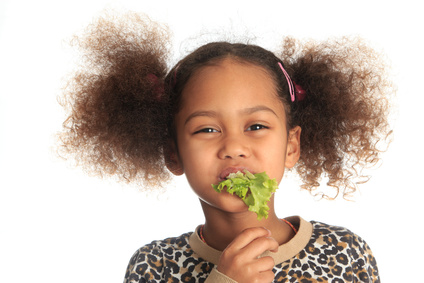 According to the 2013 USDA Farm to School Census, there are 2,401 school gardens across the US that grow edible produce and incorporate it in school meals. While studies have shown that incorporating school gardens into nutrition curriculum can increase student awareness and consumption of fruits and vegetables, a new 2015 from the Cornell Center for Behavioral Economics Nutrition Programs (BEN Center) looked at how the introduction of garden greens impacts salad sales independent of other initiatives.
According to the 2013 USDA Farm to School Census, there are 2,401 school gardens across the US that grow edible produce and incorporate it in school meals. While studies have shown that incorporating school gardens into nutrition curriculum can increase student awareness and consumption of fruits and vegetables, a new 2015 from the Cornell Center for Behavioral Economics Nutrition Programs (BEN Center) looked at how the introduction of garden greens impacts salad sales independent of other initiatives.
In an upstate New York high school with 370 students, BEN Center researchers worked with a high school teacher to cultivate a small school garden. As part of the curriculum for his class, the teacher planted and grew spinach in the garden during the spring of 2012. When the spinach leaves were harvested in April of 2012, they were added to the salads already prepared by the school cafeteria staff. To promote these school grown veggies, promotional posters and signs, provided by the BEN Center, were posted around the cafeteria to inform students of the new fresh greens in the salad,
To determine the impact of the program, the BEN Center researchers measured salad purchase and waste data both before and after the introduction of the school garden greens. The researchers found that after the school garden greens were introduced, students who selected salads increased from 2% to 10% and those who selected salad ate an average of two thirds of it. While these results are promising and indicate that more students are willing to try vegetables when they are garden fresh, the researchers suggest pairing the introduction of new foods with Smarter Lunchroom principles can not only encourage more students to select the salads, but eat more of it too. Smarter Lunchroom principles are research based methods that enhance the lunch line and cafeteria to encourage selection and consumption of healthy foods. When paired with other successful initiatives, school gardens have the potential to make school meals more popular and appealing to students and in turn increase selection and consumption of healthful, veggies in the school cafeteria!
To start a school garden in your school see these additional resources:
A School Garden—How to Grow it and Enjoy it!
Develop Your Summer Maintenance Plan for School Gardens
How Teachers Can Include School Gardens in the Classroom Curriculum
School Gardens Promote Healthier Eating and Better Learning
For more school garden resources, click here!
Contributor
Katie Baildon, Cornell Center for Behavioral Economics in Child Nutrition Programs
Sources
Wansink, Brian, Andrew Hanks, and David Just (2015). A Plant to Plate Pilot: A Cold-Climate High School Garden Increased Vegetable Selection but Also Waste. Acta Paediatrica, 104(8), 823-826. doi: 10.1111/apa.13028
